
cody.raak
gamer level 7
17073 xp
17073 xp
followers
28
28
Use my invite URL to register (this will give me kudos)
https://boardgaming.com/register/?invited_by=cody-raak
profile badges




recent achievements

Novice Advisor
Submit 10 game tips, strategies, or house rules and receive a total of 270 positive ratings.
Submit 10 game tips, strategies, or house rules and receive a total of 270 positive ratings.

Stone of the Sun
Explore select games by completing a series of exploration actions ...learn more »
Explore select games by completing a series of exploration actions ...learn more »

Intermediate Reviewer
Review 8 games and receive a total of 380 positive review ratings.
Review 8 games and receive a total of 380 positive review ratings.

Viscount / Viscountess
Gain 25 total followers
Gain 25 total followers
Player Stats
Critic (lvl 2)
665 xp
665 xp
Explorer (lvl 5)
4545 xp
4545 xp
Professor (lvl 3)
947 xp
947 xp
Reporter (lvl 3)
868 xp
868 xp
About Me
I love games with strong themes that are well-integrated with their play mechanics. My favorite themes are Asian or fantasy themes, and pretty much anything science fiction; and I love discovering new ones.
Most of my family and friends like to play basic card games: Pit, Dutch Blitz, Uno, and the like; but I try to broaden their appetites.
I would love to play more story-telling and role-playing games, but I need to find the right group.


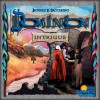
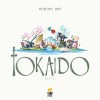












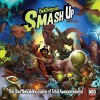






































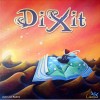














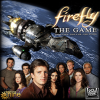













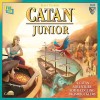














































Munchkin
MUNCH – KIN
[noun]
1. a child or small person (origin: the “Munchkins,” depicted as a race of small childlike creatures, in L. Frank Baum’s 1900 work,The Wonderful Wizard of Oz)
2. a classification of role-playing gamer who prioritizes game objectives such as loot and experience points over character development and narrative quality
3. a light card game designed by Steve Jackson that mimics and parodies classic role-playing games like Dungeons & Dragons in a simplified dungeon crawl, where players – i.e. “Munchkins,” impish adventurers out for their own advantage at the expense of their fellow party members – draw “door” cards, resolve what they encounter, and win “loot” cards, until one “Munchkin” advances to level 10 and wins the game
4. a family of card games expanding the original game into several genres and themes, e.g. Super Munchkin
[adjective]
5. describing a number of board and card games transposing the artwork and characters of the original card game into new iterations of other existing games, e.g. Munchkin Loot Letter
How I Discovered Munchkin and Fell in Love with It
I was introduced to the Munchkin card games through the Munchkin Booty variant by some friends, and had a great first game. The card artwork was cheeky, and the puns and allusions on the cards hooked me. It was exactly my sense of humor, and at first blush, this game quickly joined my newly-formed Top 5 list. I bought the Munchkin Deluxe box for my birthday, hoping that the original game would scratch my growing itch for D&D. I love the little “Munchkin” miniatures and the dungeon map board that replaced an improvised level counter system: they made the game feel more like the large-scale RPG experience I craved. I loved looking through the cards and laughing at the artwork and concepts.
My Growing Dissatisfaction
But once I played it once or twice, I quickly became disenchanted:
– The game excels with larger numbers, so 2-player games with my wife were lackluster at best.
– The game demands a “take-that,” backstabbing, kind of play that is only really possible with certain combinations of cards, making the group experience frustratingly limited.
– The game promises a high replay-ability because of its wide variety of combinations for randomized character creation: races, classes, weapons, armor, etc; but as funny as the equipment cards are, they rarely add to the experience of play unless players really exercise their imagination, and much of the equipment is sold for levels without ever factoring into play.
– The game’s familiar dungeon crawl theme suggests a large-scale party dynamic, but actual play is usually very short and individual – one player flips over a monster from the “door” deck, resolves their combat, draws that monster’s amount of “loot” cards, and the next player goes.
Why I’m Only Now Writing a Review
I love this game’s theme, and its wit, and its art. I want to love this game’s easy-to-teach mechanics and RPG concept.
But this game has been collecting dust for a number of reasons:
– The theme is very nerdy up front, and when I try to explain it to non-nerd/non-gamer friends and family, they usually opt for something more accessible and concrete (usually either disease- or train-related…).
– Hoping to add variety and rejuvenate the game, I bought a number of expansions, paying probably twice the cost of the original game. There are now so many cards that players rarely draw even a fraction of them, and the work involved in sorting and selecting an appropriate number of cards that offer an enjoyable play experience far outweighs the actual play time.
– The rulebook is terrible. It over-complicates what should be a simple game by trying to address all the potential hiccups and squabbles without actually resolving any of them.
– Most of all, the stuttering pace of the game is very distracting. The game usually starts very slow, as players develop an understanding for play and try to work out how they’re supposed to relate to the other players in their “party.” Play continues slowly for four or five rounds, reading the cards out loud and laughing, exploring how much a person can do with what they have. By the time those dynamics are familiar, one player has reached level seven or eight, and becomes a target for the other players’ interference. The pace ramps up suddenly, leaving some people way behind and advancing one person to level nine: that last encounter before level 10 drags on and on as everyone throws their last possible wrench into the game, and all of those wrenches – wandering monsters, curses, and other disadvantages – take forever to resolve, and still that person usually comes out the winner.
My Conclusion (TL;DR)
Munchkin frustrates: I want to love this game, because it promises so much to a nerd who is far, far away from his college D&D group a long time ago. That’s why I rated it so high after first playing! But “Munchkin” is as “Munchkin” does. Just like my friends who ruined the quality, story, and characters of our D&D encounters by trying to go out alone or screw everyone over for XP, Munchkin delivers exactly what it promises: purposeless backstabbing, truncated and overly simplistic play experience, and mounting tension between players only out for themselves. I would now rate this game at only a 5. I want to love this game, but I cannot any longer. I give up.